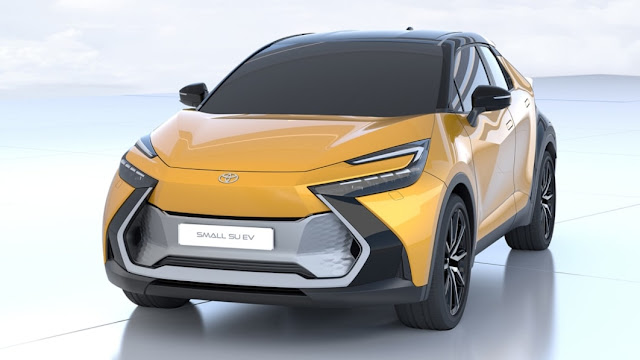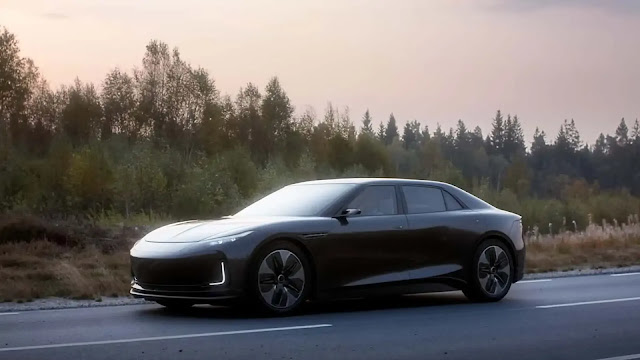The Controversies and Complexities of Europe's Rush to Electric Vehicles: Examining the Potential Consequences
The transition to electric vehicles (EVs) in Europe and the upcoming ban on petrol car sales by 2035 have sparked intense debates. While the goal of achieving greener transportation is commendable, the journey toward electric mobility is not without its challenges and potential drawbacks. In this comprehensive analysis, we delve into the various concerns surrounding Europe's rush to electric vehicles, including technological readiness, economic implications, reliance on China, and environmental impact.
1. Technological Challenges and Unresolved Issues:
The rapid adoption of EVs presents significant technological challenges. The development of infrastructure, such as charging stations and battery technology, requires substantial investments and advancements. Moreover, concerns about the limited driving range, longer charging times compared to refueling petrol cars, and the overall practicality of EVs need to be addressed to ensure a smooth transition.
2. The Dilemma of Reliance on China:
One pressing concern is the heavy reliance on China for electric vehicle batteries and their minerals. China's dominance in the EV market, driven by significant investments and a low-cost coal-fired grid, raises questions about Europe's dependence on a country with a mixed track record on human rights and geopolitical issues. Diversifying battery supply chains and reducing reliance on a single source is essential for ensuring strategic autonomy and minimizing geopolitical risks.
3. Financial Implications and Economic Impact:
The transition to electric vehicles involves substantial costs and potential economic repercussions. The massive investments required in battery manufacturing, infrastructure development, and subsidies for consumers and manufacturers pose a financial burden. Furthermore, concerns about the impact on the automotive industry and potential job losses require careful consideration and strategic planning.
4. Environmental Considerations and Realistic Benefits:
While the primary objective of the electric vehicle transition is to reduce carbon dioxide emissions, the environmental benefits may not be as straightforward as initially perceived. The production process for EVs, especially the extraction of minerals for battery manufacturing, can generate significant carbon emissions. Comprehensive life-cycle assessments are crucial to evaluate the true environmental impact of electric vehicles and their potential emissions reductions compared to traditional petrol cars.
5. Practicality and Consumer Perspectives:
From a consumer standpoint, the transition to electric vehicles raises practical concerns. The higher cost of electric cars compared to petrol equivalents remains a barrier for many potential buyers. Additionally, the limited availability of charging infrastructure, especially in remote areas, poses challenges for long-distance travel and convenience. Balancing the environmental benefits with consumer needs and expectations is crucial for a successful transition.
6. Lessons from Previous Technological Transitions:
Examining past experiences with premature technological transitions can provide valuable insights. For instance, the rushed switch from incandescent bulbs to compact fluorescent ones had unintended consequences and raised concerns about cost, performance, and environmental impact. Ensuring that the chosen technology for the electric vehicle transition is mature, efficient, and sustainable is of utmost importance to avoid repeating past mistakes.
Europe's ambitious move towards electric vehicles is undoubtedly driven by the urgent need to reduce emissions and combat climate change. However, the transition comes with its fair share of complexities and potential drawbacks. Addressing technological challenges, diversifying supply chains, carefully evaluating the environmental benefits, and considering consumer perspectives are vital for a successful and sustainable transition. A comprehensive and balanced approach, coupled with strategic planning and realistic targets, will be essential to ensure a greener, economically viable, and consumer-friendly future for Europe's automotive industry.
7. Mitigating Infrastructure Challenges:
To support the widespread adoption of electric vehicles, a robust charging infrastructure is essential. Upgrading the existing electricity grid to accommodate the increased demand for charging stations is a complex task. Adequate investments and planning are necessary to avoid overloading the grid and ensure seamless charging experiences for EV owners. Furthermore, promoting the development of fast-charging networks along highways and in urban areas will alleviate range anxiety and enhance the appeal of electric vehicles.
8. Job Creation and Economic Opportunities:
While concerns about job losses in the traditional automotive sector exist, the shift to electric vehicles also presents significant opportunities for job creation and economic growth. The development of a thriving electric vehicle industry can stimulate innovation, research and development, and the manufacturing of new components and technologies. Governments and industry stakeholders should collaborate to ensure a smooth transition, offering retraining programs and support to workers affected by the evolving automotive landscape.
9. Advancements in Battery Technology:
As the backbone of electric vehicles, battery technology plays a pivotal role in their performance, range, and environmental impact. Continued investments in research and development are crucial to enhance battery efficiency, durability, and energy storage capacity. Technological breakthroughs, such as the development of solid-state batteries, could revolutionize the industry by addressing concerns over limited driving range and charging times. Collaboration between academic institutions, manufacturers, and governments is vital to accelerate battery advancements.
10. Environmental Sustainability and Renewable Energy Integration:
While electric vehicles contribute to reducing tailpipe emissions, their overall environmental impact relies heavily on the energy sources used for electricity generation. Expanding renewable energy infrastructure, such as wind and solar power, is essential to ensure that the electricity powering EVs comes from sustainable sources. By integrating renewable energy into the grid, the carbon footprint of electric vehicles can be further reduced, reinforcing their role in achieving long-term environmental sustainability.
11. Consumer Incentives and Education:
To encourage widespread adoption, governments should consider offering attractive incentives and subsidies for purchasing electric vehicles. These incentives can include tax breaks, rebates, and grants to make electric vehicles more accessible and affordable. Additionally, public awareness campaigns and educational initiatives are crucial to dispel misconceptions, address range anxiety concerns, and promote the environmental and economic benefits of electric mobility.
12. Collaboration and International Cooperation:
Given the global nature of the automotive industry, collaboration and international cooperation are vital for the success of electric vehicle transitions. Sharing best practices, research findings, and technological advancements among countries can accelerate progress and facilitate the development of common standards and regulations. By working together, governments and industry stakeholders can overcome challenges and capitalize on opportunities, ensuring a sustainable and globally connected electric vehicle ecosystem.
The transition to electric vehicles in Europe presents a paradigm shift in transportation, with the potential to significantly reduce carbon emissions and foster a sustainable future. However, a comprehensive approach is necessary to address the various challenges associated with the transition. By focusing on technological advancements, infrastructure development, job creation, renewable energy integration, consumer incentives, and international collaboration, Europe can navigate the complexities of the electric vehicle revolution successfully. Striking a balance between environmental objectives, economic considerations, and consumer needs will be key to realizing a greener, more efficient, and equitable transportation system for the future.
13. Addressing Range Anxiety:
One of the key concerns for potential electric vehicle owners is range anxiety—the fear of running out of battery power before reaching their destination. To alleviate this concern, automakers and governments must work together to enhance the charging infrastructure. Investing in the deployment of fast-charging stations in strategic locations, such as shopping centers, parking lots, and highways, will provide convenient and accessible charging options, allowing EV owners to confidently embark on longer journeys.
14. Autonomous Driving and Electric Vehicles:
The convergence of electric vehicles and autonomous driving technology presents a promising future for the transportation industry. Electric vehicles serve as an ideal platform for autonomous driving due to their advanced electronics, connectivity features, and energy efficiency. The integration of autonomous driving technology can enhance the safety, efficiency, and convenience of electric vehicles, further accelerating their adoption and revolutionizing the way we travel.
15. Reducing Dependence on Fossil Fuels:
The transition to electric vehicles is a critical step toward reducing our dependence on fossil fuels. By embracing cleaner energy sources, we can decrease our reliance on oil imports and mitigate the environmental impacts of conventional internal combustion engines. Electric vehicles, coupled with renewable energy generation, offer a sustainable alternative that helps combat climate change, air pollution, and the depletion of finite resources.
16. Improving Air Quality in Urban Areas:
Urban areas suffer from poor air quality due to high levels of pollution emitted by vehicles. Electric vehicles play a vital role in improving air quality and reducing noise pollution in cities. With zero tailpipe emissions, they contribute to cleaner and healthier urban environments, benefiting both residents and the overall quality of life. Encouraging the adoption of electric vehicles can help create greener, more livable cities for future generations.
17. Encouraging Innovation and Entrepreneurship:
The shift towards electric vehicles creates a fertile ground for innovation and entrepreneurship. Startups and established companies alike have the opportunity to develop cutting-edge technologies, innovative business models, and sustainable mobility solutions. This ecosystem of innovation fosters economic growth, job creation, and the emergence of new industries, positioning countries at the forefront of the global electric vehicle revolution.
18. Balancing Affordability and Accessibility:
While electric vehicles offer numerous advantages, their higher upfront costs remain a barrier for many consumers. Governments and manufacturers must work collaboratively to drive down the cost of electric vehicles through economies of scale, advancements in manufacturing processes, and battery technology improvements. Making electric vehicles more affordable and accessible to a wider range of consumers will accelerate their adoption and ensure a fair and equitable transition.
19. Supporting Local Industries and Supply Chains:
The transition to electric vehicles presents an opportunity to revitalize local industries and supply chains. By fostering domestic production of electric vehicles, batteries, and related components, countries can create jobs, strengthen their economies, and reduce dependence on foreign imports. Governments can incentivize investment in local manufacturing capabilities, research and development, and the establishment of sustainable supply chains to support the growth of the electric vehicle industry.
20. A Greener Future for Generations to Come:
Ultimately, the transition to electric vehicles is a crucial step toward achieving a greener and more sustainable future. By reducing carbon emissions, promoting renewable energy integration, and embracing technological advancements, we can create a transportation system that aligns with our environmental objectives and secures a better world for future generations. The time to act is now, and the electric vehicle revolution offers a pathway toward a cleaner and more resilient planet.
In conclusion, the rush to electric vehicles presents a transformative opportunity to reshape the automotive industry and address pressing environmental challenges. By navigating the obstacles, embracing innovation, and fostering collaboration, we can pave the way for a sustainable, efficient, and electrified transportation future. Let us embrace this revolution, unlock its potential, and accelerate the transition to electric vehicles for the benefit of our planet and all its inhabitants.







Comments